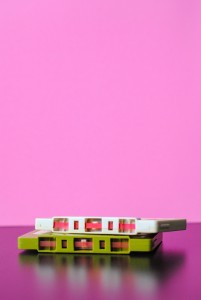The question comes up in coaching sessions now and again, “Should my auditions be processed, or not?”
In general, auditions have at least two purposes.
The primary purpose is to audition the voice talent’s performance. That’s how you perform the copy.
If you’ll be recording the gig in your home studio, then likely they’re also auditioning your home studio audio quality.
The last thing you want to do is surprise the producers of the gig. If you submit a well-processed audition that sounds like it was recorded at a million-dollar studio, and you book the gig and find out you’ll be recorded live remotely and none of that processing will be in your feed, then your producers are going to get a rude surprise.
There are generally three scenarios for jobs for which you’ll be auditioning from your home studio:
- You’ll be recording the final job yourself in your home studio,
- You’ll be doing a live connected session using Source-Connect, ipDTL, or another technology and will be recorded remotely in another studio, or
- You’ll be physically going into a studio to record.
If you’ll be self-recording then as a rule you will record your audition with the exact same processing setup as you will use when self-recording. If you use light processing, for example, light noise reduction, light compression, etc., when you provide final audio to clients, then use it in the audition. The idea is to audition with the same audio quality the producers will get when you do the gig.
If the audition is for a job where you’ll be recorded remotely by another studio, for example using Source-Connect, then generally you will want the audition to emulate your live session capability, meaning that if your processing is done in post and your live remote feed is raw and unprocessed, directly off your mic, then you would not use any processing in your audition.
If you use in-line processing, meaning you feed real-time processed audio to Source-Connect, then you will want to audition with that processing.
And if you’ll be going into an external studio to record, send your best audio.
In the real world, this often breaks out by audition source. Pay-to-plays, direct clients, and some production house castings will be self-recorded, and generally you’ll audition using your processing stack.
Auditions for agents, networks, and some production houses will often be recorded remotely, and you would want to submit your auditions raw. These casting agents and producers want to know exactly what kind of audio they’ll be getting from you in a live remote session. I’ve heard several national casting directors say they don’t want processed auditions for this very reason.
This is why having a quality recording space is crucial for booking top gigs. If your audio quality isn’t top notch in live sessions, it’s not top notch for national gigs.
One last note, all processing should be light. I cannot strongly enough recommend having a professional audio engineer custom design your processing stack for you based on your room and voice. Hiring a pro engineer can be done remotely. Typically, the engineer will walk you through their process, which usually involves sending them photos or video of your booth, a recording of a specified length of your voice, and a specified length of room tone. The engineer will analyze your recordings and design processing that optimizes your voice and your space.
I’ve been doing this a long time and I know enough to know that pro audio engineers who design processing are worth every penny. I urgently caution you not to attempt to “design” your own processing unless you’re an audio engineer.
The idea overall is to submit audio that won’t surprise anyone when you get the gig.
Happy auditioning and good luck.
Check out our free PDF with pro-tips from real working voice-over actors here!
Want to learn more about voiceover? Signup for our introductory VO webinar.





